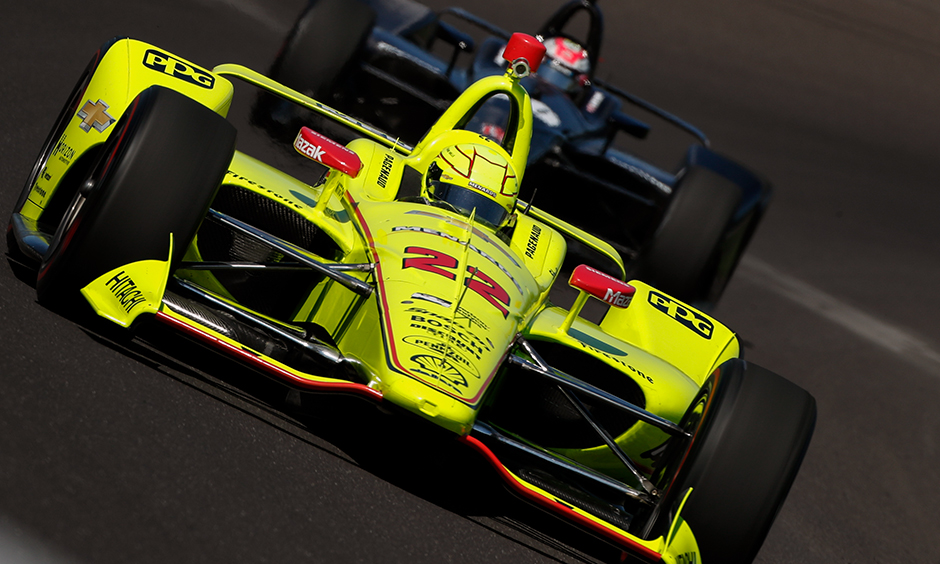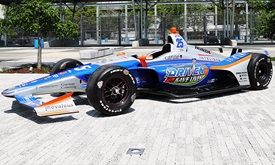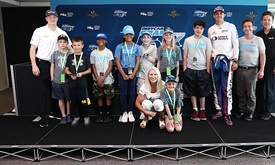Practice time essential for Indy 500 teams to decipher new car's nuances
MAY 14, 2018
With practice opening Tuesday for the 35 drivers hoping to start the 2018 Indianapolis 500 presented by PennGrade Motor Oil, all indications point to yet another closely fought 500-mile battle.
That was the consensus after testing on the Indianapolis Motor Speedway oval from April 30-May 2, where drivers walked away feeling that the universal aero kit introduced this year will ensure more nail-biting action on race day, Sunday, May 27.
“I think the racing is going to be interesting,” said Simon Pagenaud, driver of the No. 22 Menards Team Penske Chevrolet.
“The universal aero kit behaves quite a bit different to what we've been used to in the last few years, but overall it's quite decent. We're just scratching the surface at the moment with what we need to go out and try to win the race.”
102ND INDIANAPOLIS 500 PRESENTED BY PENNGRADE MOTOR OIL: Entry list
While testing gave the drivers a taste of how the new car will react on the oval, how it runs in traffic will be a big question mark left to work out as practice gets underway in earnest.
“It's still a little hard to answer the question fully,” said Ed Carpenter, the team owner/driver of the No. 20 Ed Carpenter Racing Fuzzy’s Vodka Chevrolet and a two-time Indy 500 pole sitter. “I don't think it's going to be entirely different, but we haven't really seen long runs in traffic. We saw people in traffic (during the test), but in more short type of runs, so we don't fully know if there will be more differences or if it will be similar.
“Testing is more about shorter runs and making sure you maximize all the tires you have, so there's still plenty to learn. With all the changes we have gone through from the previous aero kit to this one, the downforce targets for Indy aren't all that different, but the downforce is being made differently.”
Essentially, the road-hugging ability of the 2018 car is similar to the previous configuration, but since more of the downforce sticking the car to the track is generated from underneath the car and not from winglets and such on top of the chassis, it will have its own quirks and intricacies that drivers need to figure out. That fact will make each practice day even more critical to finding success in qualifying on May 19-20 and for the 200-lap race the following week.
Sébastien Bourdais spent most of his testing time two weeks ago focusing on big-picture things like different ride heights and adjusting the front and rear wings to get the feel of the car. He said he really didn't get into the details. That work, the driver of the No. 18 Team SealMaster Honda said, will be the focus of practice.
Although he feels the car will “race well because the draft is fine and the cars suck up pretty good” on the straights, Bourdais insisted that the testing offered some early indications of the job ahead.
“I don't think it's that dramatically different, but I think the car is more sensitive than it used to be,” said Bourdais, who drives for Dale Coyne Racing with Vasser-Sullivan. “Now because all the downforce is coming from under the floor, you gotta hit it (the setup) right.
“I think there's just a lot of things that are going to make it tough to get the car in the right groove and it's probably going to be less forgiving if you are a little off. You are going to have to hit it bang on and be super careful and very methodical and get all the fundamentals right.”
Early indications are that the ride height — the space between the bottom of the car and the track surface — may be the most intricate adjustment because it directly affects airflow under the car where most of the downforce is created.
With wind at IMS often a huge factor in the way the car handles, Bourdais feels the way it affects the universal aero kit could play a key role in who hits the sweet spot on race setup.
“The wind's effect will probably be the same, but may be a bit worse because the car makes a lot of downforce from the bottom and it fluctuates a lot depending on how close or how far you are from the ground,” he said.
“When the car has a headwind, it's pushed down on the ground quite a bit, so your ride height lowers. If the ride height is the sensitive factor, when you have a tailwind or a headwind, you'll have a big fluctuation.”
It all should add up to ensure an interesting month of May at the Indianapolis Motor Speedway, and another exciting Memorial Day.
While there may still be a number of things to work out, Carpenter feels one thing is certain: Fans won't be able to resist moving to the edge of their seats when the green flag waves for the field of 33.
“I don't expect it to be a drastically different race than it's been for the past couple of years,” he said.
“There's not 100 percent clarity yet on exactly what it's going to be, but the racing has been good and exciting and I don't think that will change. I don't see there being less passing.”
Indianapolis 500 practice runs from 11 a.m.-6 p.m. ET daily from Tuesday through Friday and will stream live each day on RaceControl.IndyCar.com, youtube.com/indycar and the INDYCAR Mobile app. Tuesday's practice will set aside two hours (1-3 p.m.) for rookie orientation and veteran refresher programs for those unable to attempt them on May 1.



















